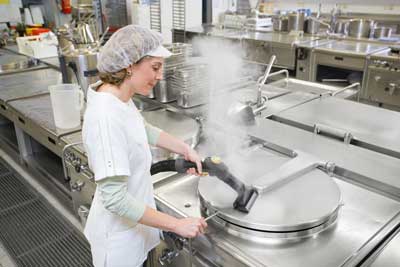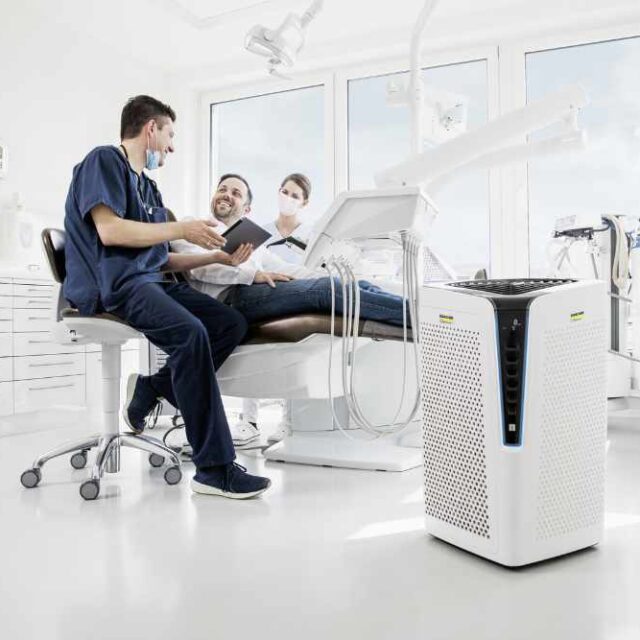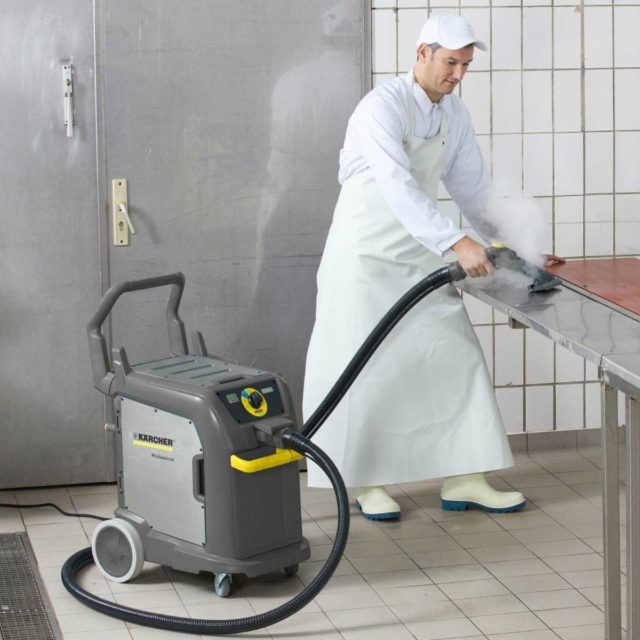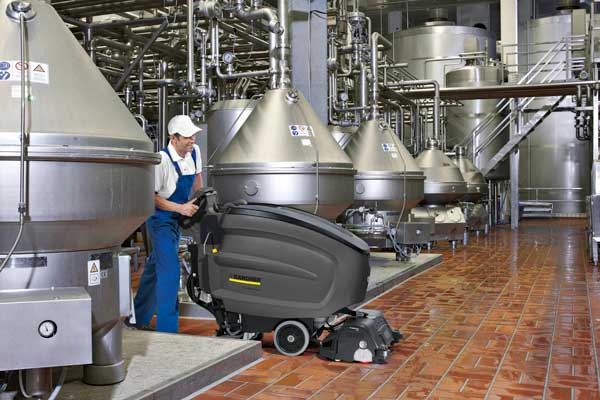As the owner of a business with food preparation areas, it’s your responsibility to ensure your premises are safe and hygienic. Not only will your customers expect your kitchens to be clean, your bathrooms to smell fresh, and your cutlery to be spotless, you’ll be required by law to undergo the occasional food hygiene inspection to ensure standards are upheld.
In order to abide by legislation and keep customers safe you’ll be expected to clean, sanitise and disinfect your business on a regular basis. But what’s the difference between them?
Cleaning
Cleaning a surface means removing visible debris, dirt or dust. This tends to involve using a cloth and a cleaning detergent or soap.
Regularly cleaning surfaces can help to improve the appearance of the workplace while reducing the number of germs. However, when cleaning food preparation areas, there’s a risk that cross-contamination can occur, with germs and bacteria being spread from one place to another.
The Food Standards Agency (FSA) recommends that food businesses use disposable single-use cloths when cleaning. If this isn’t possible, it’s important to use different clothes and equipment for raw and RTE areas. Using colour coded cloths can be an effective way of ensuring bacteria is not spread from one area or surface to another.
Sanitising
Sanitising a surface involves removing germs and reducing microorganisms by 99.9%. Although it’s wise to sanitise all surfaces on a regular basis, certain areas will require more frequent sanitisation than others. High-traffic touch points like taps, doorknobs and kettles are prime examples of objects that are regularly exposed to bacteria.
When sanitising a surface, be sure to follow any instructions given on cleaning equipment or sanitisers. Any liquid sanitisers need to be mixed at the instructed concentration. Too weak and they’ll be ineffective at banishing germs, too strong and they may be dangerous or damaging.
Some sanitisers need to be left on the surface for a particular period of time. Cleaning them off too soon could prevent them from working effectively.
Disinfecting
Disinfecting a surface will enable you to destroy almost 99.99% of disease-causing germs, bacteria and viruses within a matter of minutes.
Although it may seem as though there’s little distinction between sanitising and disinfecting in terms of outcome, the few hundredths of percent can make a big difference.
The FSA advises that food businesses use a dishwasher, sterilising sink, or a steam cleaner to clean and disinfect equipment and utensils.
If a dishwasher or heat disinfection is not possible, food businesses may chemically clean the objects or surfaces in question.
Disinfectants won’t work on visibly dirty surfaces, so areas used for raw and ready-to-eat (RTE) food preparation must be cleaned using a two stage process:
- Detergent must be used to clean and remove visible dirt and this must be followed by rinsing the object or surface with clean water.
- The object or surface must be disinfected using a disinfectant. Any instructions given by the disinfectant’s manufacturer must be followed.





















